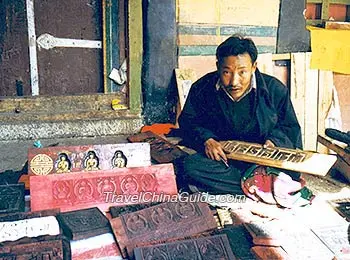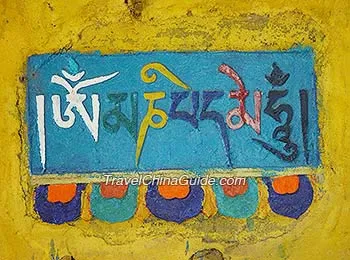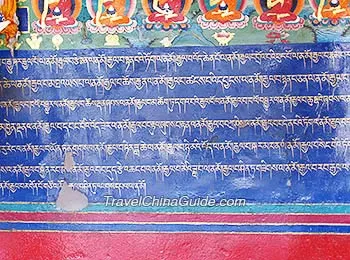Om Mani Pedme Hum and Tsa-Tsa
Om Mani Pedme Hum
| ||
|
So what is the mantra? There is no definite answer to the question since it is not easy to translate the mantra into other languages. According to the Dalai Lama, the six-syllable mantra means one can transform one's impure body, speech and mind into those of a Buddha by following the path which is inseparable integrality of method and wisdom. The first syllable, Om, symbolize one's impure body, speech and mind, and also the pure noble body, speech and mind of a Buddha. Buddhism claims that an impure body, speech and mind can be transformed into pure ones of a Buddha, who was once impure and later by removing their negative attributes, achieved enlightenment on his path.
Mani, the jewel, symbolizes factors of method, compassion and love, the altruistic intention to become enlightened. "Just as a jewel is capable of removing poverty, so the altruistic mind of enlightenment is capable of removing the poverty, or difficulties, and of solitary peace. Similarly, just as a jewel fulfils the wishes of sentient beings, so the altruistic intention to become enlightened fulfils the wishes of sentient beings", the Dalai Lama says.
PADME means lotus and symbolizes wisdom. Growing out of mud but not being stained by mud, lotus indicates the quality of wisdom, which keeps you out of contradiction.
The last syllabus, Hum, means inseparability, symbolizes purity & can be achieved by the unity of method and wisdom.
Tsa-Tsa
 |
| Tsatsa |
Tsatsas fall into different categories in accordance with ingredients added, including plain clay tsatsa, which has no special ingredient; ash tsatsa, which has ashes of late lamas added; medicine tsatsa, which has Tibetan herbs added; humoral tsatsa, which contains liquid produced in the mummifying procedure of late high lamas; and tsatsa made by high lamas themselves or other celebrities. In addition, however, there are some virtual tsatsas made. Lucky visitors may find in some region that local people are using their tsatsa moulds stamping in wind, water and fire! They believe everything can be used to make the holy object, even wind, water and fire.
After tsatsas being molded, they are dried or fired to be hard. Only after ritually empowered can they be used as holy objects!
- Last updated on Aug. 15, 2025 by Demi Li -

